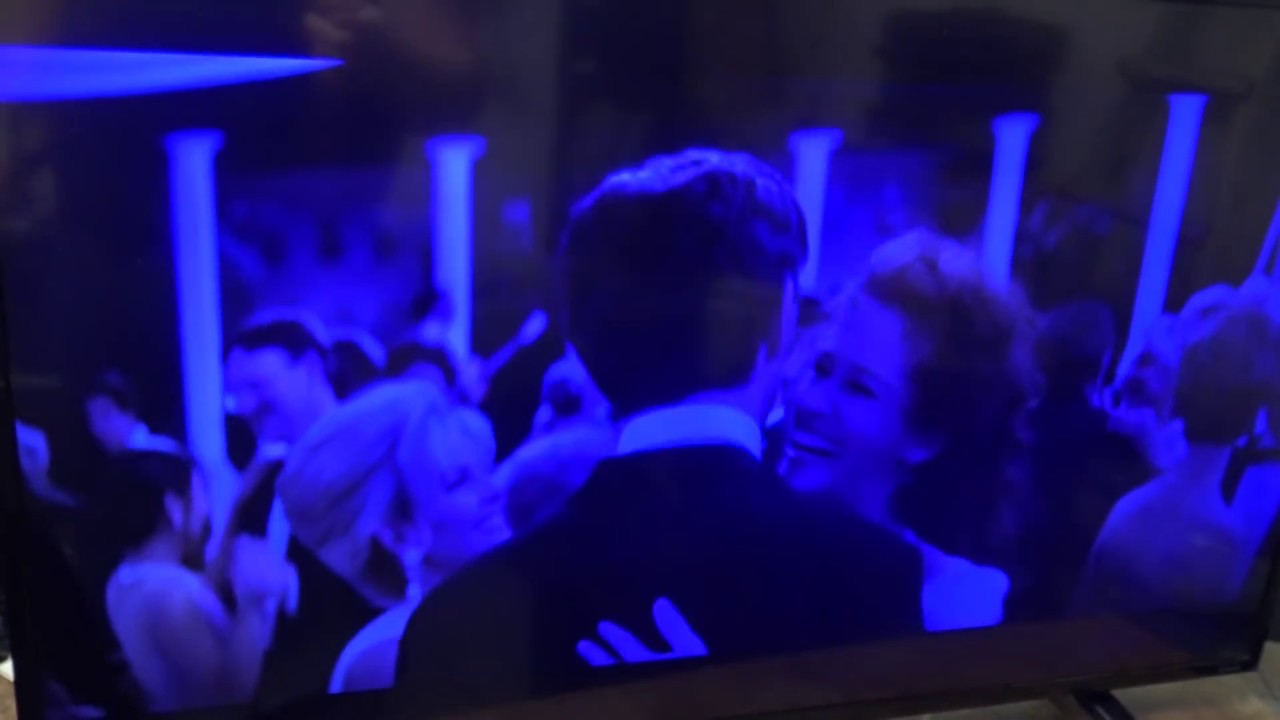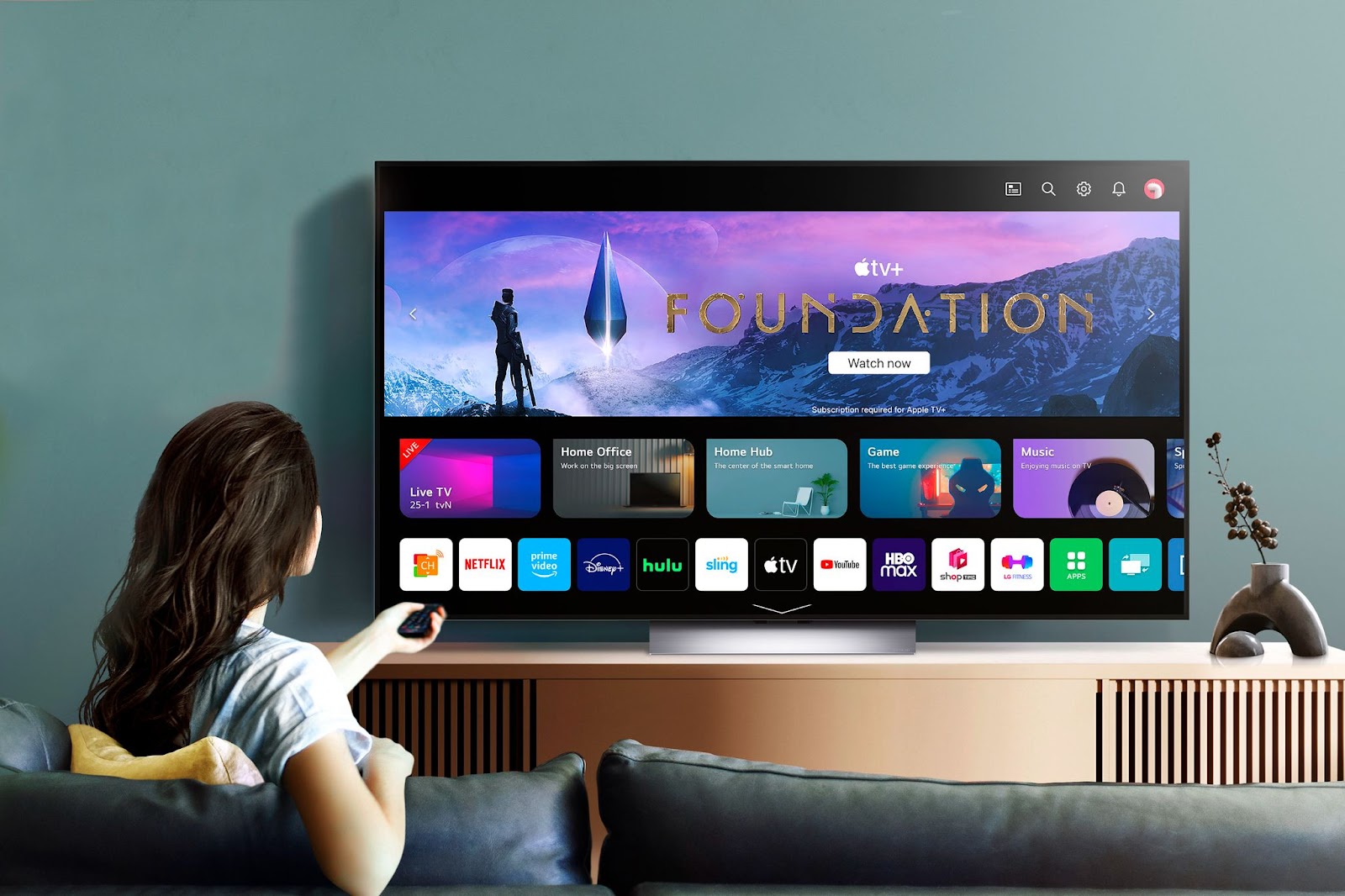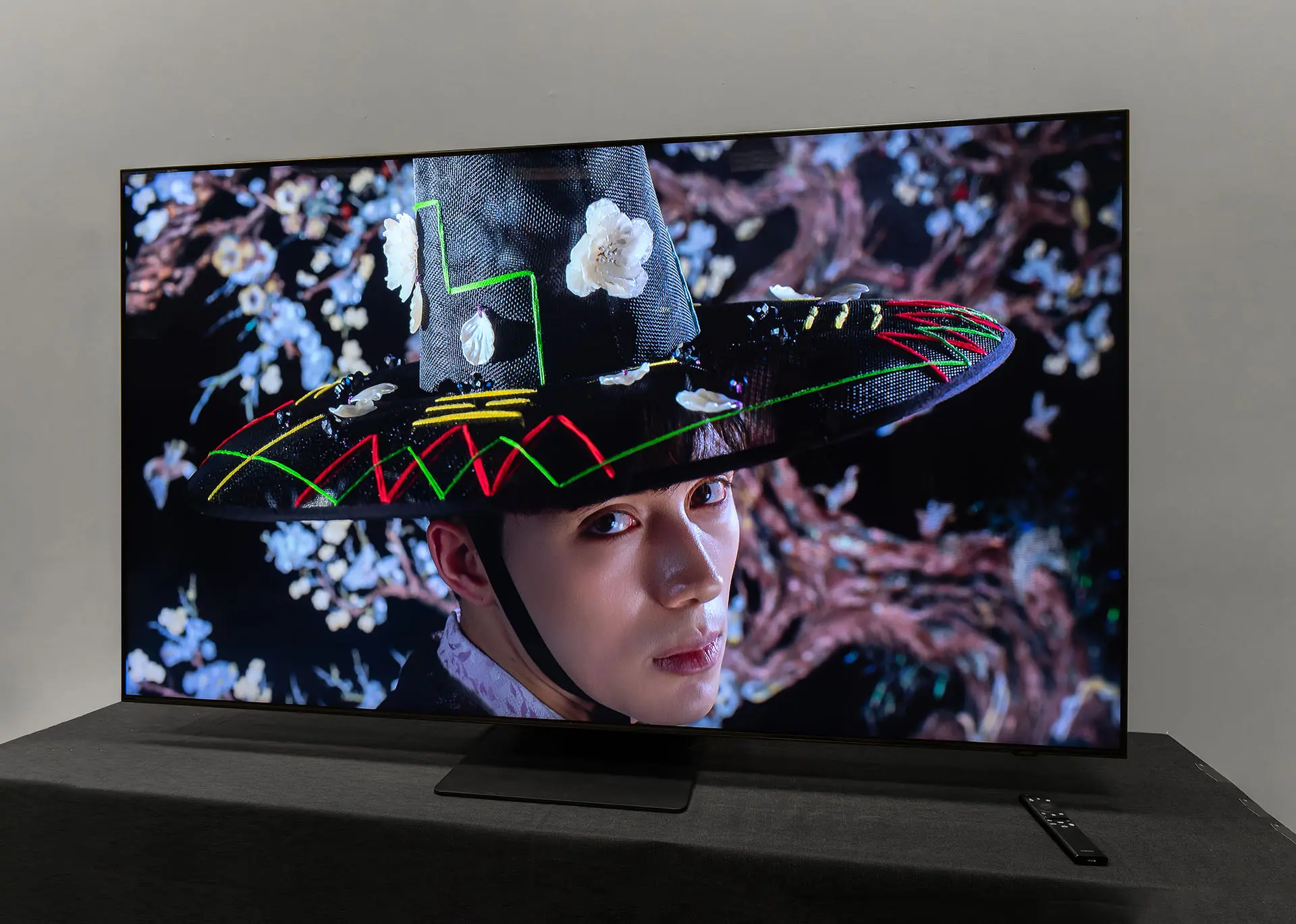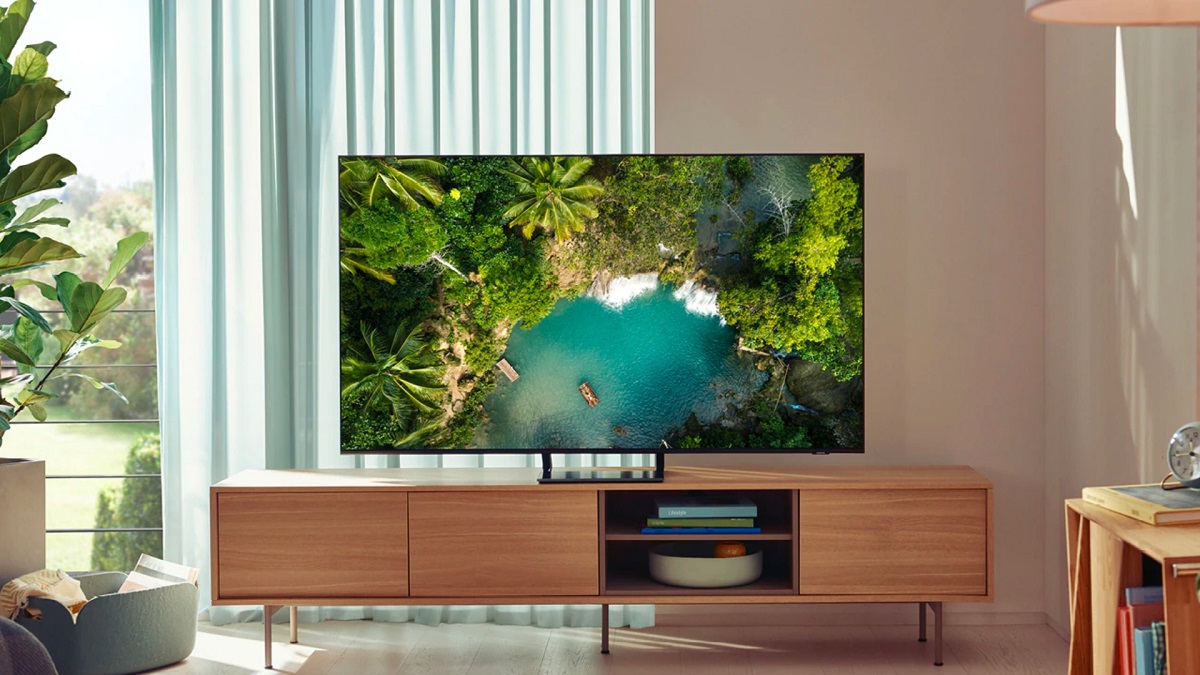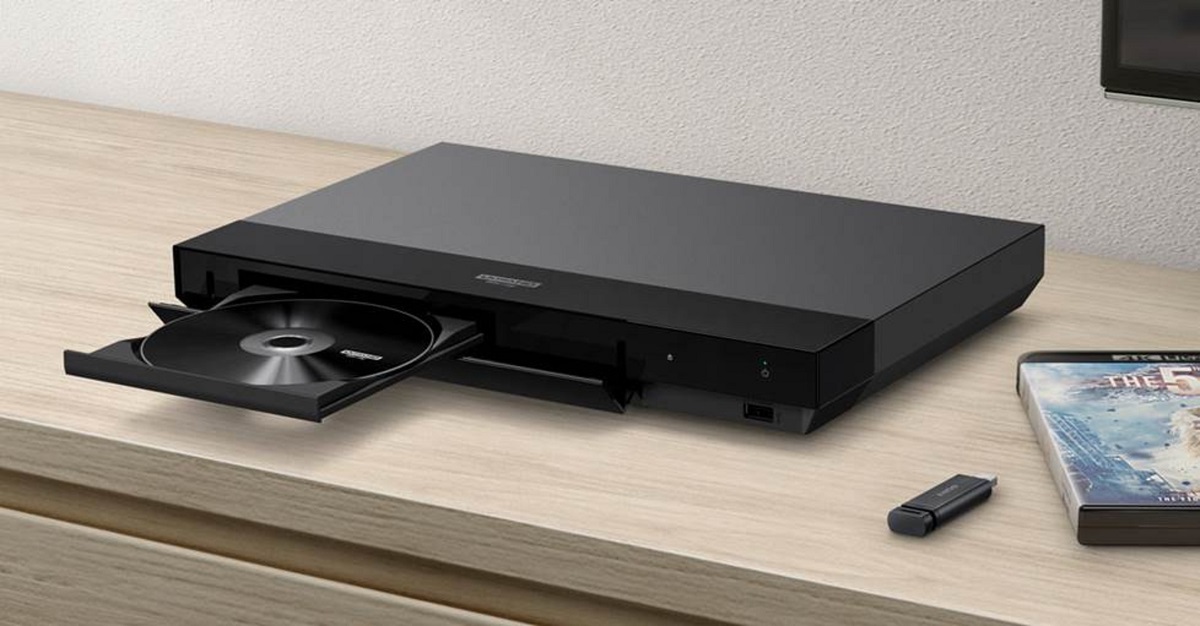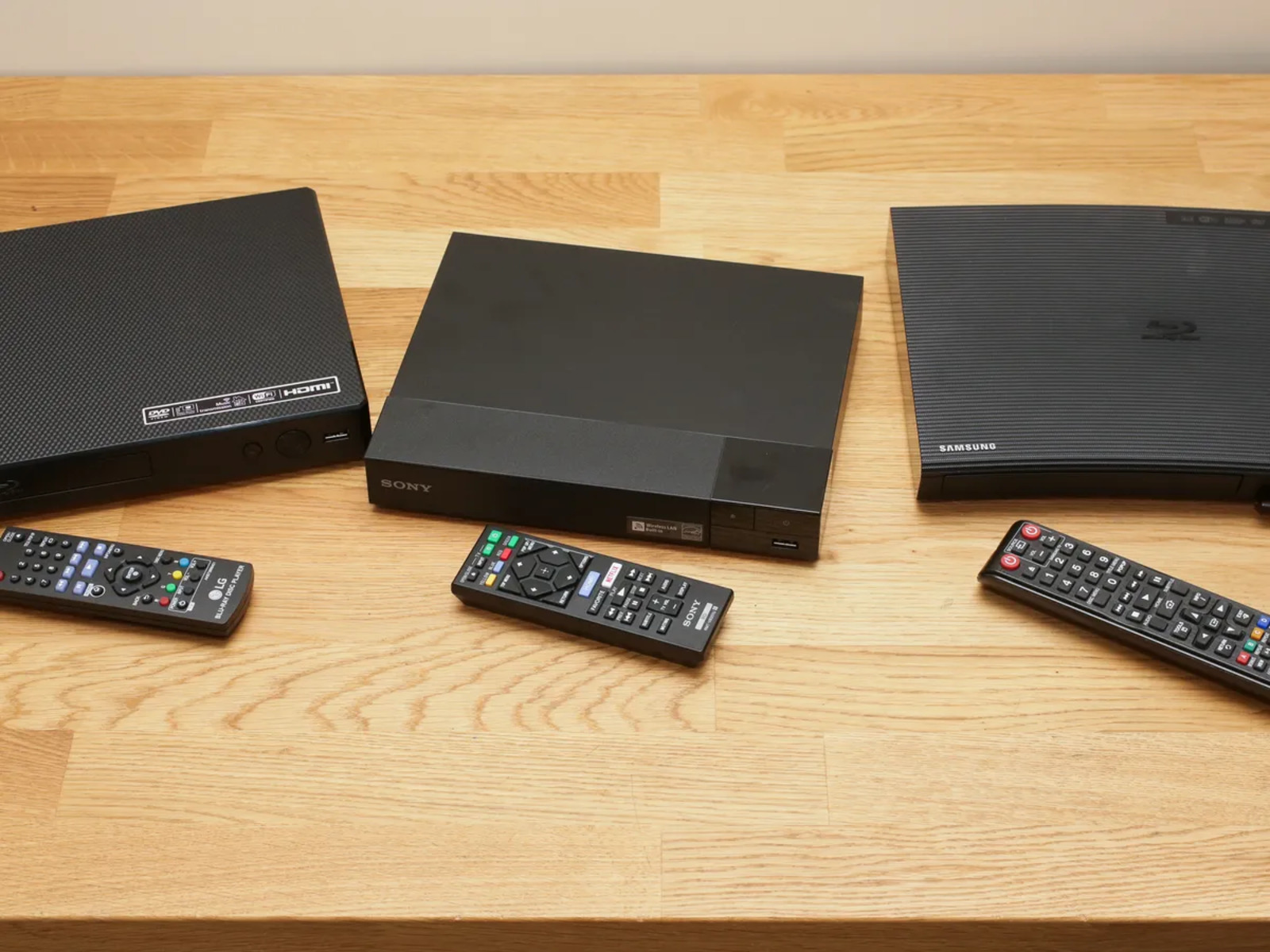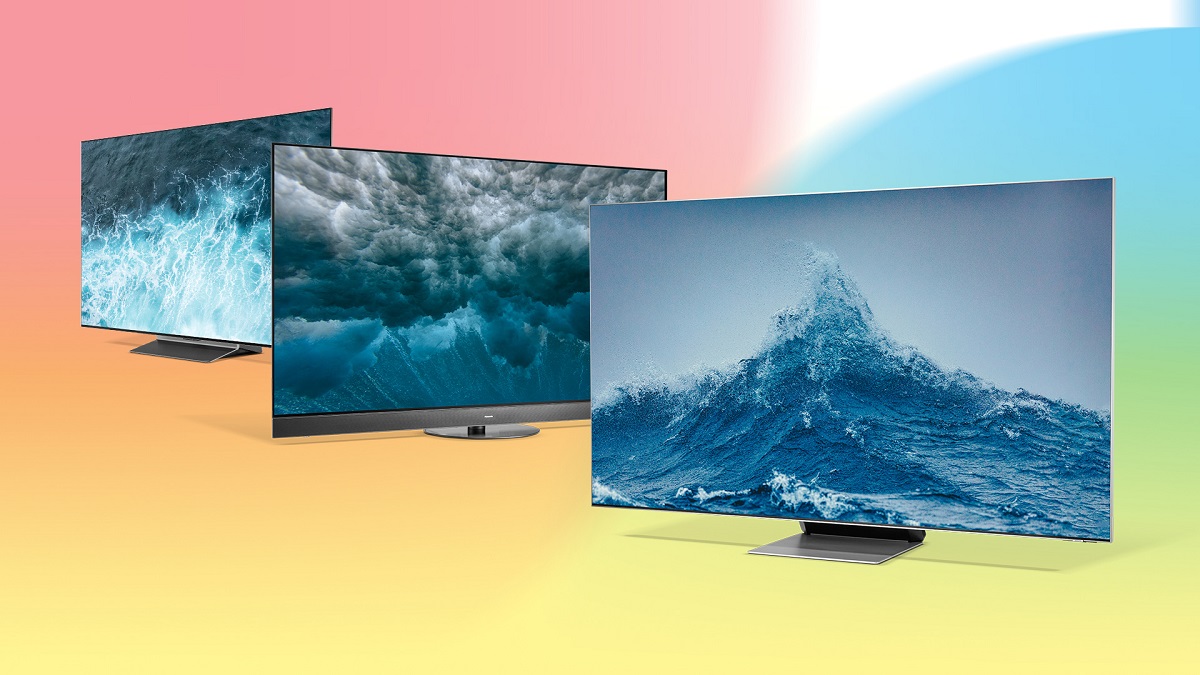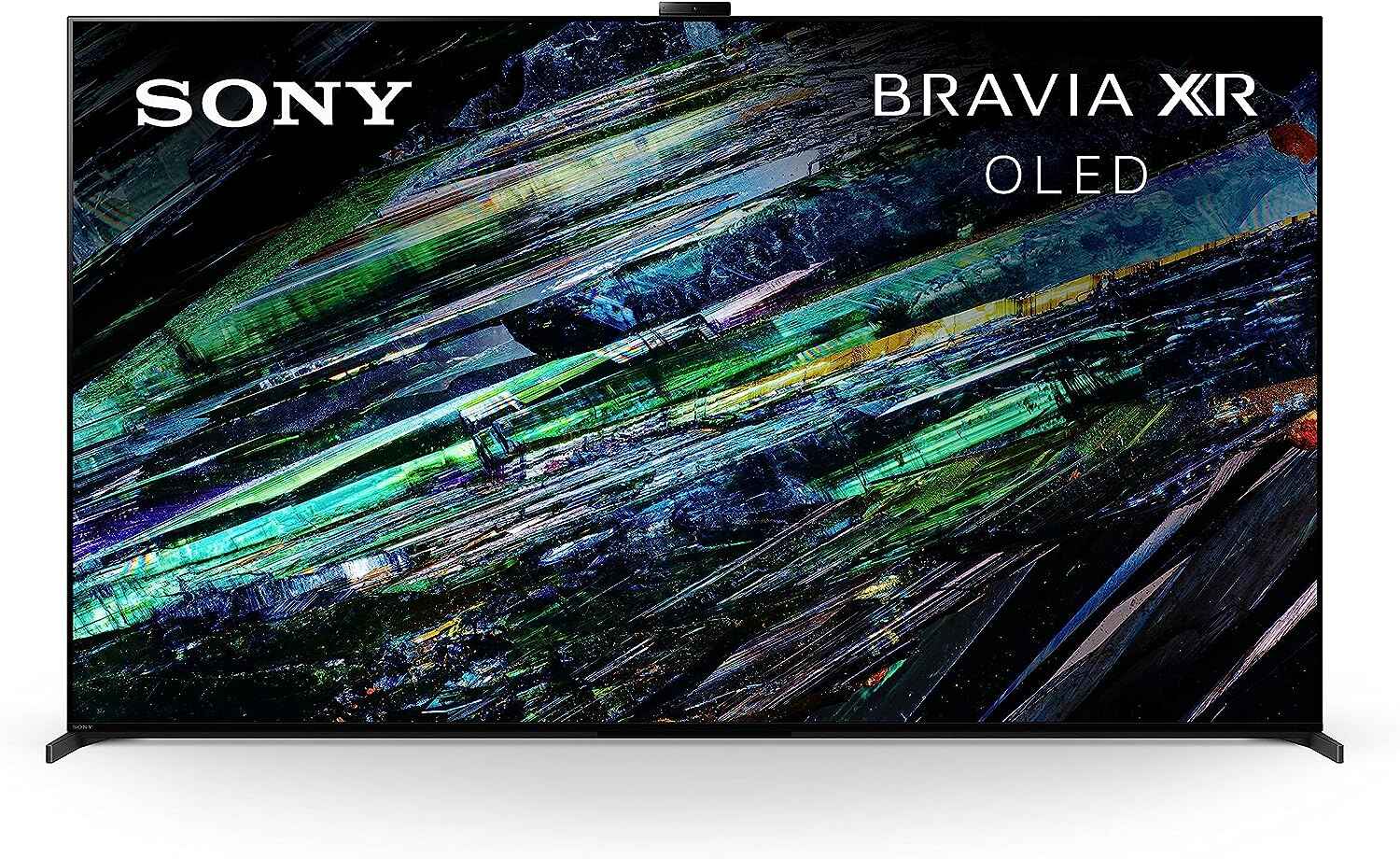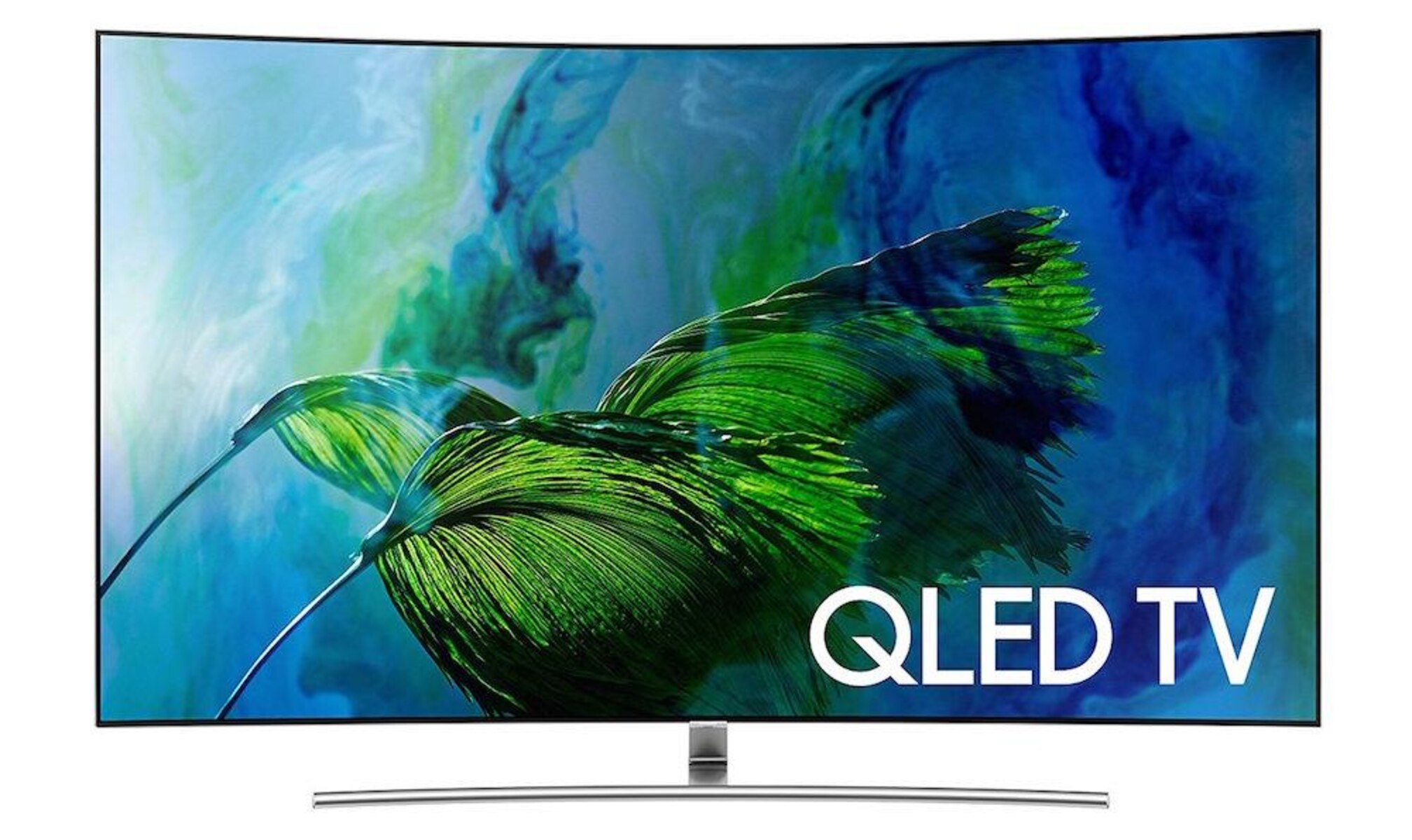Introduction
Welcome to this troubleshooting guide on why your LG Smart TV may have a blue tint. If you’ve noticed that the colors on your LG Smart TV screen appear to be predominantly blue, it can be frustrating and affect your viewing experience. Fortunately, there are several possible causes for this issue, and in this article, we will explore each one and provide you with potential solutions.
A blue tint on your LG Smart TV can be caused by various factors, including incorrect picture settings, color temperature calibration, faulty HDMI cables, outdated software or firmware, or even a hardware problem. While it may seem daunting to troubleshoot the issue, rest assured that most cases can be resolved with a few simple steps.
LG Smart TVs are known for their exceptional picture quality and vibrant colors, so when a blue tint starts dominating the screen, it’s important to identify the underlying cause and take appropriate action. Improperly calibrated settings or outdated software can often be easily fixed, allowing you to restore the true colors on your TV screen.
In the following sections, we will delve into the potential causes of the blue tint on your LG Smart TV and provide step-by-step solutions to help you troubleshoot and fix the problem. From adjusting picture settings to checking hardware connections, we have you covered. Let’s get started!
Possible causes of the blue tint on LG Smart TVs
Before diving into the solutions, it’s essential to understand the potential causes behind the blue tint on your LG Smart TV. By identifying the root cause, you can effectively address the issue and restore the optimal color balance on your screen. Here are some common culprits:
- Picture settings: Incorrect picture settings can result in an imbalanced color display. If the blue tint is prominent, it could be due to settings such as brightness, contrast, or color saturation.
- Color temperature: The color temperature setting on your TV determines the whiteness of the displayed colors. If the color temperature is set too high or too low, it can lead to a blue or bluish tint on the screen.
- Faulty HDMI cable: A damaged or low-quality HDMI cable can interfere with the transmission of color data, resulting in an imbalanced color display. This can cause the blue tint to dominate the screen.
- Outdated software or firmware: Software or firmware issues on your LG Smart TV can cause abnormalities in color rendering. If your TV’s software or firmware is outdated, it’s worth considering an update to resolve any known issues.
- Hardware issue: In rare cases, the blue tint may be a result of a hardware problem within your LG Smart TV. This can be related to the display panel, internal components, or circuitry.
By understanding these potential causes, you can take targeted steps towards resolving the issue. In the following sections, we will discuss each possible cause in more detail and guide you on how to fix the blue tint on your LG Smart TV. Let’s get to the solutions!
Picture settings
Incorrect picture settings can often be the culprit behind a blue tint on your LG Smart TV. It’s possible that the brightness, contrast, or color saturation settings are not properly adjusted, leading to an imbalanced color display. Here’s what you can do to fix it:
a. Access the picture settings: Start by locating the “Settings” menu on your LG Smart TV. Depending on the model, you may find it in different places, but it is usually represented by a gear or cog icon. Once you’ve found it, navigate to “Picture” or “Display” settings.
b. Adjust the color settings: Look for options like “Color,” “Color Temperature,” or “Color Balance.” Experiment with lowering the intensity of blue or increasing the red and green levels to achieve a more balanced color display. Remember to make incremental changes and observe the results before making further adjustments.
c. Reset to default: If you’ve made numerous changes to the picture settings and still experience a blue tint, consider resetting them to their default values. This can help you eliminate any unintentional adjustments that may have caused the color imbalance.
d. Enable or disable picture enhancements: Some LG Smart TVs offer additional picture enhancement features such as “Dynamic Contrast,” “Super Resolution,” or “TruMotion.” Experiment with turning these options on or off to see if they have any impact on the color balance. Disabling these enhancements may result in a more accurate representation of colors.
Remember, the ideal picture settings can vary depending on personal preference and the lighting conditions in your environment. Don’t hesitate to play around with different settings to find the perfect balance.
In the next section, we will discuss another potential cause of the blue tint on LG Smart TVs – color temperature. Let’s continue troubleshooting!
Color temperature
The color temperature setting on your LG Smart TV plays a significant role in determining the overall color balance of the screen. If the color temperature is set too high or too low, it can result in a noticeable blue tint. Here’s how you can calibrate the color temperature:
a. Access the picture settings: Navigate to the “Settings” menu on your LG Smart TV and find the “Picture” or “Display” settings, just like we did in the previous section.
b. Locate color temperature options: Look for options like “Color Temperature,” “White Balance,” or “Color Tone.” These settings allow you to adjust the overall warmth or coolness of the displayed colors.
c. Adjust the color temperature: Experiment with lowering the color temperature to reduce the blue tint. Look for presets like “Cool,” “Normal,” or “Warm” and select the one that appears most natural to your eyes. Alternatively, some TVs allow you to manually adjust the color temperature by moving sliders or entering numerical values.
d. Fine-tune with color balance: In some cases, adjusting the color temperature alone may not completely eliminate the blue tint. You can further fine-tune the color balance by individually adjusting the red, green, and blue levels. This will help achieve a more accurate and balanced color representation.
It’s important to note that the optimal color temperature can vary depending on personal preference and the ambient lighting conditions in your viewing area. Experiment with different settings to find the one that suits your needs best.
If adjusting the color temperature doesn’t resolve the blue tint issue on your LG Smart TV, it’s time to explore the next potential cause – faulty HDMI cables. Let’s move on to the next section to learn more.
Faulty HDMI cable
A faulty HDMI cable can be another possible cause of the blue tint on your LG Smart TV. If the cable is damaged or of low quality, it can interfere with the transmission of color data, resulting in an imbalanced color display. To determine if the HDMI cable is the culprit, follow these steps:
a. Inspect the HDMI cable: Check the HDMI cable for any visible signs of damage, such as frayed wires, bent connectors, or loose connections. If you notice any issues, it’s likely that the cable needs to be replaced.
b. Swap the HDMI cable: If you have a spare HDMI cable available, try using it to connect your LG Smart TV to the input source. This will help verify if the blue tint issue is indeed caused by a faulty cable. If the blue tint disappears with the new cable, it’s clear that the previous one was the problem.
c. Ensure a secure connection: Make sure that the HDMI cable is securely plugged into both your TV and the connected device (e.g., cable box, gaming console). A loose connection can result in signal interference and affect the color output.
d. Consider high-quality cables: If you need to replace the HDMI cable, opt for a high-quality cable that supports the necessary bandwidth for optimal color transmission. Look for cables with gold-plated connectors, shielded wires, and high-speed HDMI specifications for the best performance.
By addressing any issues with the HDMI cable, you can eliminate it as the cause of the blue tint on your LG Smart TV. If this step doesn’t resolve the issue, it’s time to move on to the next potential cause – outdated software or firmware. Let’s explore that in the following section.
Outdated software or firmware
Outdated software or firmware on your LG Smart TV can sometimes lead to abnormalities in color rendering, including a blue tint on the screen. Keeping your TV’s software and firmware up to date is crucial for optimal performance and bug fixes. To address this issue:
a. Check for software updates: Access the “Settings” menu on your LG Smart TV and navigate to the “Software Update” or “Firmware Update” section. Here, you can check if any updates are available for your TV. If an update is available, follow the on-screen instructions to install it.
b. Connect to the internet: To download and install software or firmware updates, your LG Smart TV needs to be connected to the internet. Ensure that your TV is connected either via Wi-Fi or an Ethernet cable to receive updates.
c. Enable automatic updates: To stay up to date with the latest software releases, consider enabling the automatic update feature on your LG Smart TV. This way, your TV will automatically download and install updates whenever they become available, ensuring you have the latest bug fixes and enhancements.
d. Power cycle your TV: If you’ve installed a software or firmware update and the blue tint persists, try power cycling your TV. Simply unplug the power cord from the wall outlet, wait for a few moments, and then plug it back in. This can help refresh the TV’s internal system and potentially resolve any lingering software issues.
By ensuring that your LG Smart TV is running the latest software or firmware, you can eliminate any known issues that might be causing the blue tint. However, if the issue persists even after updating the software, it’s time to explore the final potential cause – hardware issues. Let’s proceed to the next section for further troubleshooting steps.
Hardware issue
In rare cases, a hardware issue may be the underlying cause of the persistent blue tint on your LG Smart TV. This could be related to the display panel, internal components, or circuitry. If you have exhausted all other troubleshooting steps without success, it may be time to consider a hardware inspection or repair. Here’s what you can do:
a. Contact LG support: Reach out to LG’s customer support for assistance. They may be able to provide specific troubleshooting steps or arrange for a professional technician to inspect your TV if it is still under warranty.
b. Consult a professional technician: If your LG Smart TV is no longer under warranty or if LG support recommends it, consider hiring a professional technician to inspect and diagnose the hardware issue. They will have the necessary expertise and tools to identify and resolve any underlying problems.
c. Evaluate repair options: Once the hardware issue is identified, you can explore repair options such as replacing components or repairing the display panel. However, it’s important to balance the cost of repair against the value of the TV, especially if it is an older model.
While hardware issues are less common, they cannot be ruled out entirely. If all else fails and the blue tint persists, seeking professional assistance is the best course of action.
Now that we have explored the possible causes and solutions for the blue tint issue on LG Smart TVs, it’s time to summarize the steps and take action to resolve the problem. Let’s proceed to the next section for a concise overview of the troubleshooting steps.
How to fix the blue tint on LG Smart TVs
To fix the blue tint on your LG Smart TV, follow these troubleshooting steps:
- Adjust the picture settings: Access the picture settings on your TV and experiment with adjusting the brightness, contrast, and color saturation.
- Calibrate the color temperature: Fine-tune the color temperature settings to achieve a more balanced color display.
- Check and replace the HDMI cable: Inspect the HDMI cable for any damage, and if necessary, replace it with a high-quality cable.
- Update the software or firmware: Ensure that your LG Smart TV is running the latest software or firmware updates.
- Contact LG support or a professional technician for hardware issues: If all else fails, reach out to LG support or consult a professional technician to diagnose and fix any underlying hardware problems.
By following these steps, you can identify and address the specific cause of the blue tint on your LG Smart TV. Remember to make incremental changes and observe the results before proceeding to the next troubleshooting step.
Keep in mind that the optimal solution may vary depending on your specific model of LG Smart TV and the nature of the issue. It’s also important to consult the user manual or reach out to LG’s customer support for model-specific instructions or additional troubleshooting steps.
Now that you have a comprehensive understanding of the potential causes and solutions for the blue tint issue, you can confidently take action to resolve the problem and enjoy the vibrant and accurate colors on your LG Smart TV once again.
Adjust the picture settings
One of the primary causes of a blue tint on your LG Smart TV is incorrect picture settings. When the brightness, contrast, or color saturation settings are not properly adjusted, it can result in an imbalanced color display. To fix this issue, follow these steps:
a. Access the picture settings: Locate the “Settings” menu on your LG Smart TV, usually represented by a gear or cog icon. Navigate to the “Picture” or “Display” settings.
b. Adjust the color settings: Look for options like “Color,” “Color Temperature,” or “Color Balance.” Experiment with lowering the intensity of blue or increasing the red and green levels to achieve a more balanced color display. Make incremental changes and observe the results before making further adjustments.
c. Reset to default: If you’ve made numerous changes to the picture settings and still have a blue tint, consider resetting them to their default values. This can help eliminate any unintentional adjustments that may have caused the color imbalance.
d. Enable or disable picture enhancements: Some LG Smart TVs offer additional picture enhancement features such as “Dynamic Contrast,” “Super Resolution,” or “TruMotion.” Try turning these options on or off to see if they have any impact on the color balance. Disabling these enhancements may result in a more accurate representation of colors.
Remember, the optimal picture settings can vary depending on personal preference and the lighting conditions in your viewing environment. Take your time to experiment and find the balance that suits your needs best.
By adjusting the picture settings on your LG Smart TV, you can significantly improve the color balance and reduce the blue tint. However, if the issue persists, it’s time to explore the next potential cause – calibrating the color temperature. Let’s move on to the next section for further troubleshooting steps.
Calibrate the color temperature
The color temperature setting on your LG Smart TV plays a crucial role in determining the overall color balance of the screen. If the color temperature is set too high or too low, it can result in a noticeable blue tint. To calibrate the color temperature and eliminate the blue tint, follow these steps:
a. Access the picture settings: Go to the “Settings” menu on your LG Smart TV and find the “Picture” or “Display” settings, just like in the previous section.
b. Locate color temperature options: Look for options such as “Color Temperature,” “White Balance,” or “Color Tone.” These settings allow you to adjust the overall warmth or coolness of the displayed colors.
c. Adjust the color temperature: Experiment by lowering the color temperature to reduce the blue tint. Look for presets like “Cool,” “Normal,” or “Warm” and select the one that appears most natural to your eyes. Alternatively, some TVs allow you to manually adjust the color temperature by moving sliders or entering numerical values.
d. Fine-tune with color balance: If adjusting the color temperature alone doesn’t completely eliminate the blue tint, you can further fine-tune the color balance. Try individually adjusting the levels of red, green, and blue to achieve a more accurate and balanced color representation.
Keep in mind that finding the perfect color temperature and balance is subjective and can differ based on personal preference and lighting conditions. Experiment with the settings to achieve the most pleasing and natural colors for your viewing experience.
If calibrating the color temperature doesn’t resolve the blue tint issue on your LG Smart TV, it’s time to explore the next potential cause – checking and replacing the HDMI cable. Let’s proceed to the next section for further troubleshooting steps.
Check and replace the HDMI cable
A faulty HDMI cable can contribute to a blue tint issue on your LG Smart TV. If the cable is damaged or of low quality, it can disrupt the transmission of color data, resulting in an imbalanced color display. To address this potential cause, follow these steps:
a. Inspect the HDMI cable: First, visually examine the HDMI cable for any visible damage, such as frayed wires, bent connectors, or loose connections. If you notice any issues, it’s likely that the cable needs to be replaced.
b. Swap the HDMI cable: If possible, try using a different HDMI cable to connect your LG Smart TV to the source device, such as a cable box or gaming console. This will determine whether the blue tint issue is related to the cable itself. If the blue tint disappears with the new cable, it confirms that the previous cable was faulty.
c. Ensure a secure connection: When reconnecting the HDMI cable, make sure it is securely plugged into both your LG Smart TV and the input source. A loose connection can cause signal interference and affect the color output.
d. Consider high-quality cables: If you need to replace the HDMI cable, opt for a high-quality cable that supports the necessary bandwidth for optimal color transmission. Look for cables with gold-plated connectors, shielded wires, and high-speed HDMI specifications for the best performance.
By addressing any issues with the HDMI cable, you can eliminate it as a potential cause of the blue tint on your LG Smart TV. However, if the issue persists even after replacing the cable, it’s time to explore the next potential cause – outdated software or firmware. Let’s move on to the next section to learn more about it.
Update the software or firmware
Outdated software or firmware on your LG Smart TV can sometimes lead to abnormalities in color rendering, including a persistent blue tint. Keeping your TV’s software and firmware up to date is crucial for optimal performance and bug fixes. To address this potential cause, follow these steps:
a. Check for software updates: Access the “Settings” menu on your LG Smart TV and navigate to the “Software Update” or “Firmware Update” section. Here, you can check if any updates are available for your TV. If an update is available, follow the on-screen instructions to install it.
b. Connect to the internet: To download and install software or firmware updates, your LG Smart TV needs to be connected to the internet. Ensure that your TV is connected either via Wi-Fi or an Ethernet cable to receive updates.
c. Enable automatic updates: To stay up to date with the latest software releases, consider enabling the automatic update feature on your LG Smart TV. This way, your TV will automatically download and install updates whenever they become available, ensuring you have the latest bug fixes and enhancements.
d. Power cycle your TV: If you’ve installed a software or firmware update and the blue tint persists, try power cycling your TV. Simply unplug the power cord from the wall outlet, wait for a few moments, and then plug it back in. This can help refresh the TV’s internal system and potentially resolve any lingering software issues.
By ensuring that your LG Smart TV is running the latest software or firmware, you can eliminate any known issues that might be causing the blue tint. However, it’s important to note that updating the software may not always guarantee a fix. If the issue persists even after updating, it’s time to explore the next potential cause – hardware issues. Let’s proceed to the next section for further troubleshooting steps.
Contact LG support or a professional technician for hardware issues
In rare cases, a hardware issue may be the root cause of the persistent blue tint on your LG Smart TV. These issues can range from problems with the display panel to internal components or circuitry malfunctions. If you have exhausted all other troubleshooting steps without success, it may be necessary to seek assistance from professionals. Here’s what you can do:
a. Contact LG support: Reach out to LG’s customer support for guidance and assistance with your particular model. They may be able to provide specific troubleshooting steps or recommend further actions based on your specific situation. If your TV is still under warranty, they can guide you through the warranty claim process for repairs.
b. Consult a professional technician: If LG support recommends it or if your TV is no longer under warranty, consider seeking help from a professional technician. They possess the necessary expertise and equipment to perform in-depth diagnostics and repairs on your LG Smart TV.
c. Evaluate repair options: Once the hardware issue has been identified, the technician can provide you with options for repair. This may involve replacing faulty components, repairing the display panel, or performing any necessary circuitry repairs. However, it’s essential to weigh the cost of repair against the value of the TV, particularly if it is an older model.
In cases where the blue tint issue persists despite your best efforts, contacting LG support or consulting a professional technician is the recommended course of action. They can provide personalized guidance and ensure that proper repair steps are taken to address the hardware issue effectively.
Now that we have covered the potential causes and solutions for the blue tint issue on LG Smart TVs, it’s time to summarize the steps and take appropriate action to resolve the problem. Let’s move on to the next section for a concise overview of the troubleshooting steps.
Conclusion
Dealing with a blue tint on your LG Smart TV can be frustrating, but by following the troubleshooting steps outlined in this guide, you can successfully address the issue and restore the vibrant and accurate colors on your screen.
First, adjusting the picture settings and calibrating the color temperature can often resolve the blue tint problem. By fine-tuning these settings, you can achieve a more balanced color display that suits your personal preference and viewing environment.
If the issue persists, checking and replacing the HDMI cable is the next step. A faulty cable can disrupt the color data transmission and result in an imbalanced color output. By inspecting the cable for damage and using a high-quality replacement, you can eliminate this as a potential cause.
Updating the software or firmware is also crucial for resolving any known issues with your LG Smart TV. Regularly checking for updates and installing them ensures that you have the latest bug fixes and enhancements that can address the blue tint issue.
If all else fails, it may be necessary to contact LG support or consult a professional technician for hardware issues. They have the expertise to diagnose and repair any underlying problems with the TV’s display panel, internal components, or circuitry.
Remember, troubleshooting steps may vary depending on the specific model of your LG Smart TV, so refer to the user manual or reach out to LG’s customer support for model-specific instructions. By undertaking these steps and seeking professional help when needed, you can successfully resolve the blue tint issue and enjoy a vibrant, balanced, and visually pleasing experience on your LG Smart TV once again.







